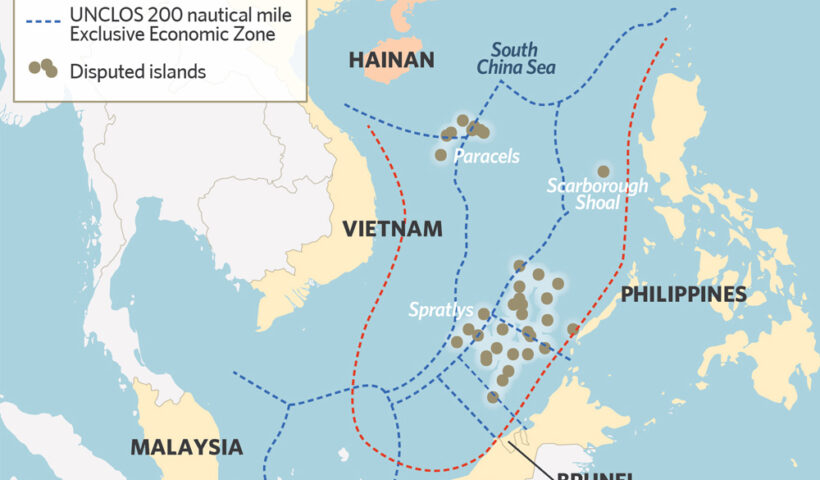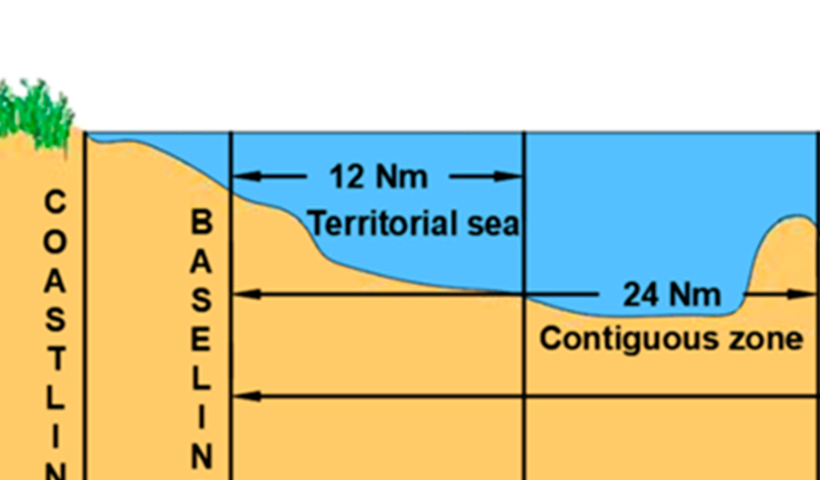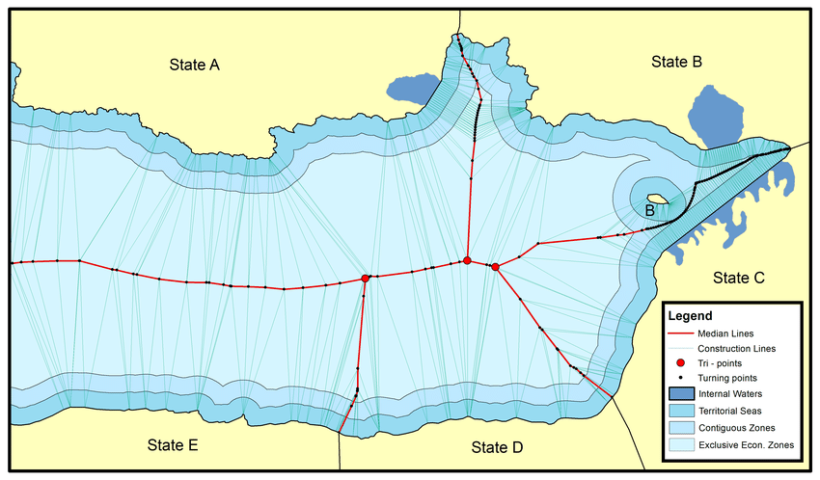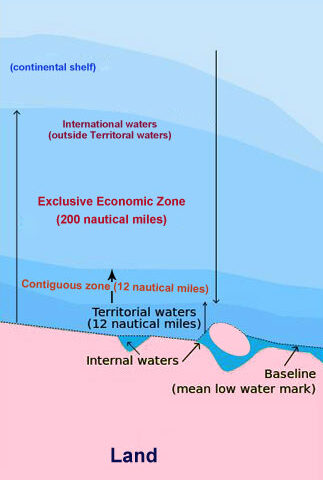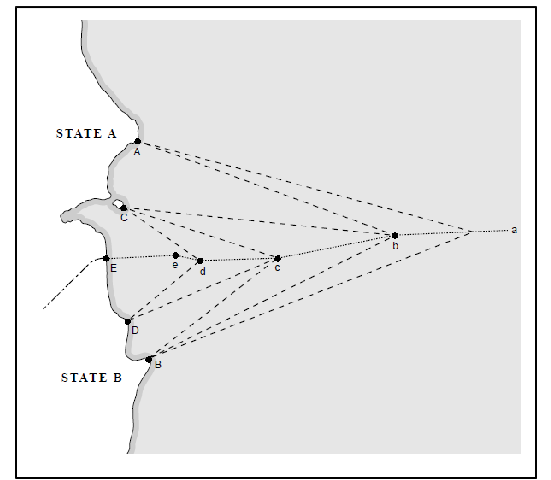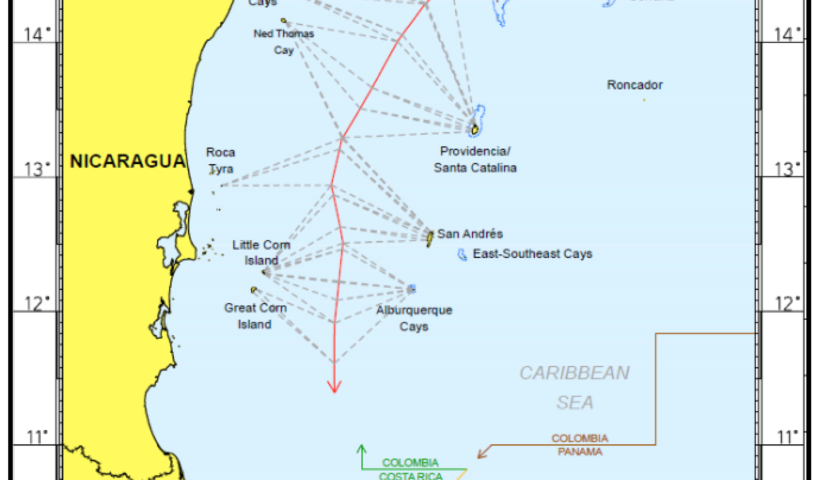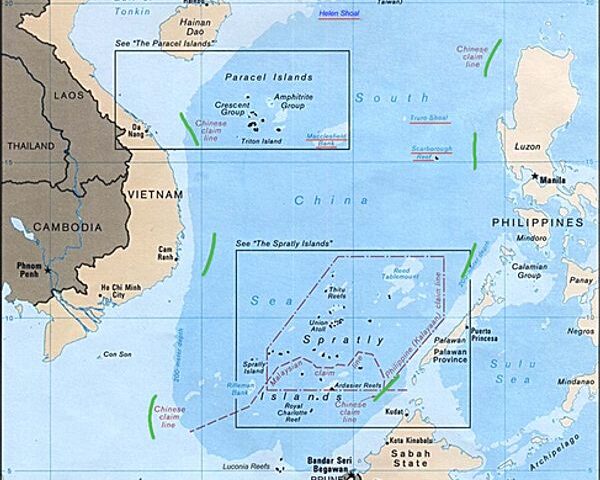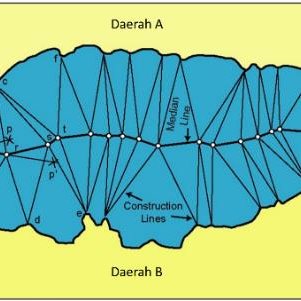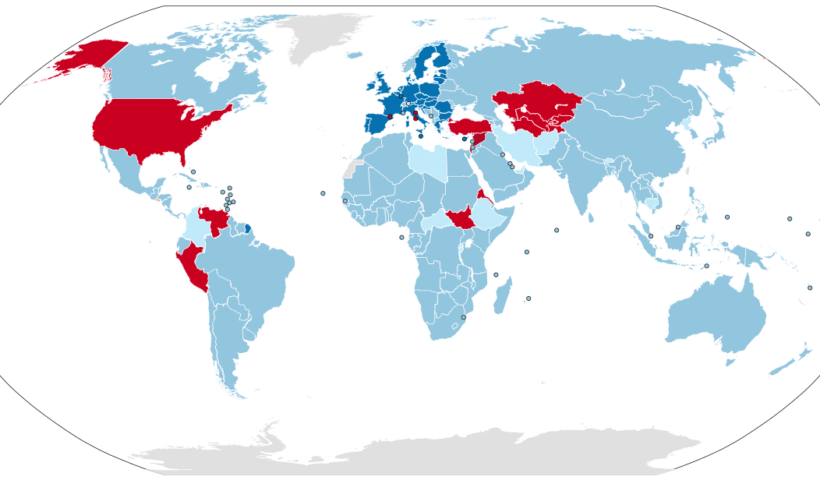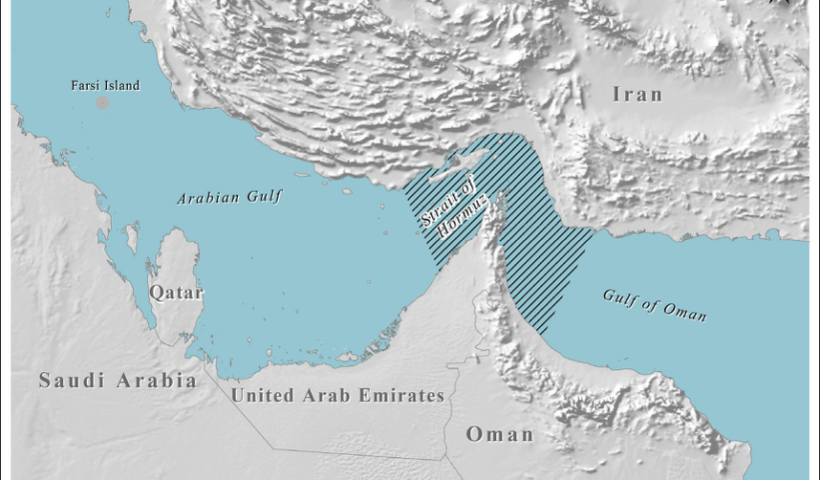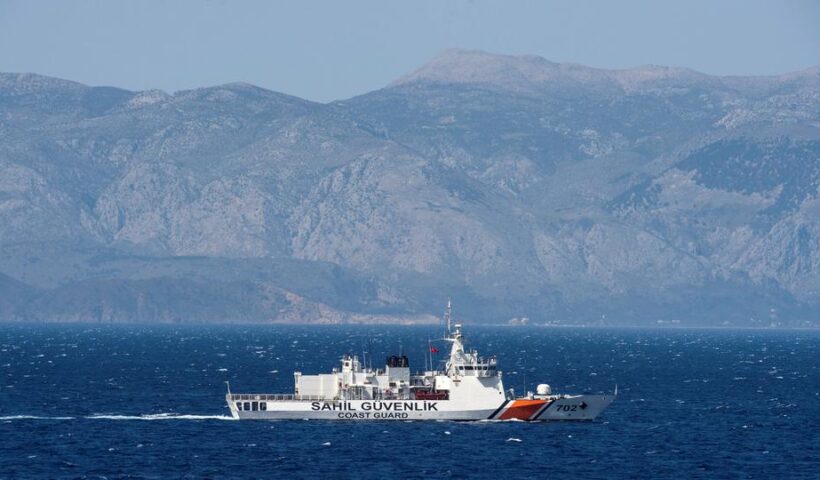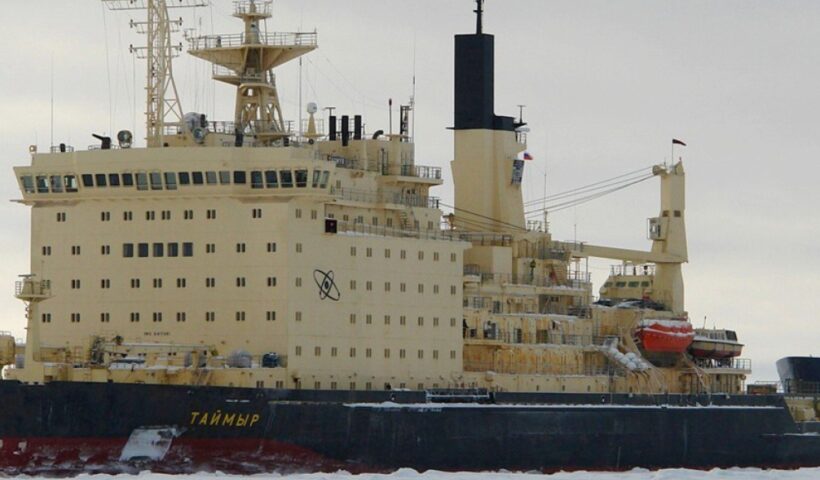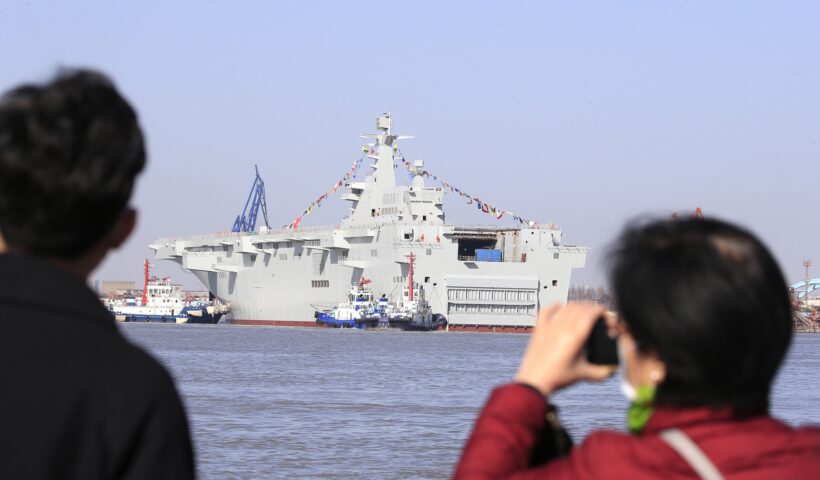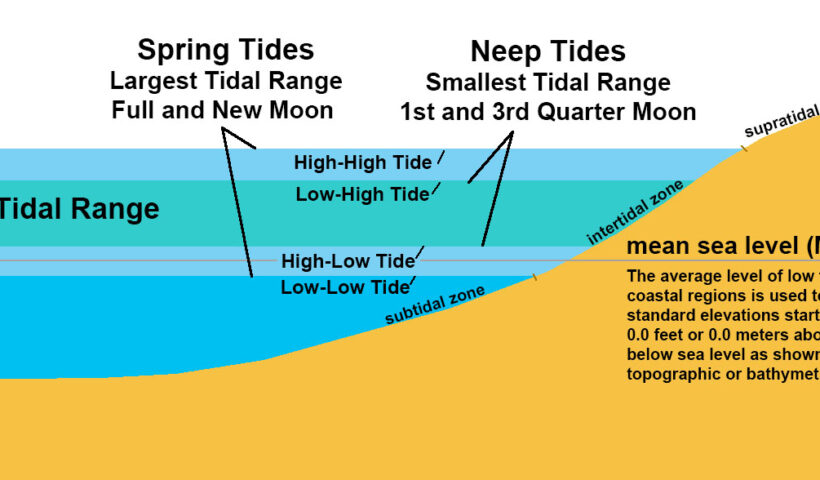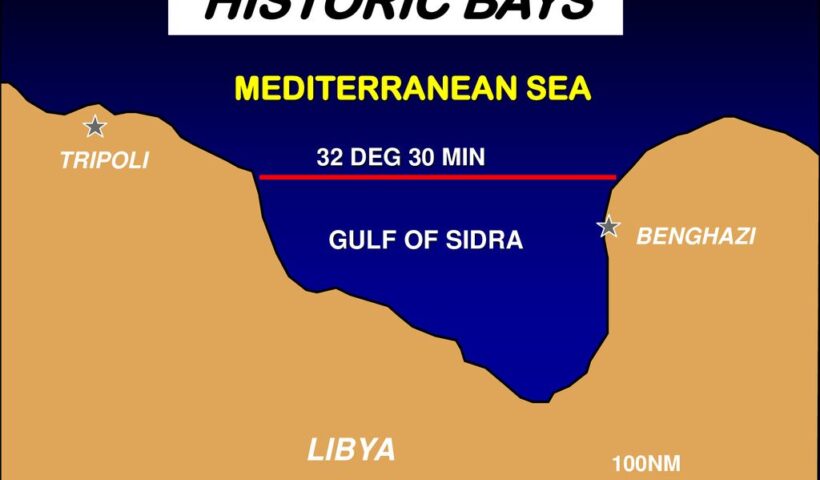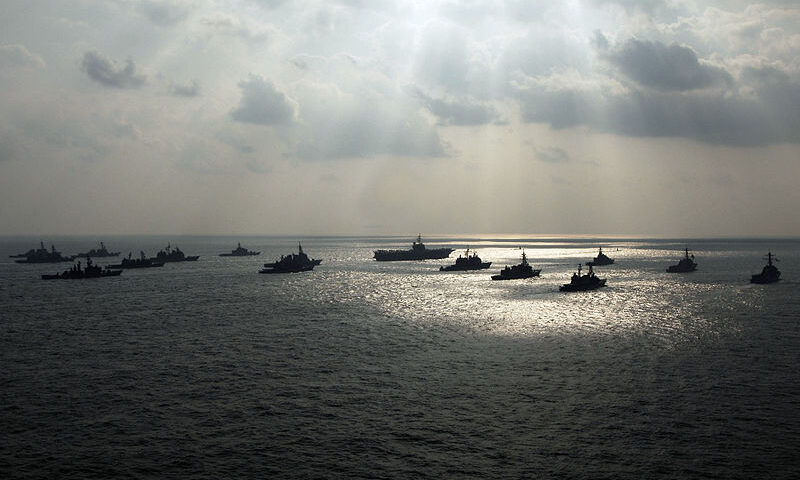Delimitation of the territorial sea between States with opposite or adjacent coasts
Where the coasts of two States are opposite or adjacent to each other, neither of the two States is entitled, failing agreement between them to the contrary, to extend its territorial sea beyond the median line every point of which is equidistant from the nearest points on the baselines from which the breadth of the territorial seas of each of the two States is measured. The above provision does not apply, however, where it is necessary by reason of historic title or other special circumstances to delimit the territorial seas of the two States in a way which is at variance therewith.
This provision in a near-verbatim reproduction of the equivalent provision of the 1958 Territorial Sea Convention. It reflects a compromise reached at UNCLOS I – and again at UNCLOS III – between two general proposed methods of delimitation.
Category: territorial waters legal aspects
Convention on the Territorial Sea and the Contiguous Zone(TSC)
Convention on the Territorial Sea and the Contiguous Zone Geneva, 29 April 1958 had Entry into force in 10 September 1964, in accordance with article 29. its Registration on the UN is 22 November 1964, No. 7477. till no it had 41 and 52 Parties.
View More Convention on the Territorial Sea and the Contiguous Zone(TSC)what is the meaning of “Equidistance line; equidistant line; median line” in law of the sea, LOSC and customary international law
In UNCLOS analysis, an “equidistance line,” synonymous with “equidistant line” or “median line,” means a line every point of which is equally distant from the nearest points on the baselines of two States. what is the meaning of “Equidistance line; equidistant line; median line” in law of the sea, LOSC and customary international law, equidistance line, equidistant line, How are maritime boundaries defined?, median line, What is a single maritime boundary?, What is median line principle?, What is unclos and its purpose?
View More what is the meaning of “Equidistance line; equidistant line; median line” in law of the sea, LOSC and customary international lawwhat is the meaning of “Coastal State” in law of the sea, LOSC and customary international law
“Coastal State” is a State from whose coast or baselines the breadth of the territorial sea is measured, those baselines being determined in accordance with UNCLOS Articles 5–7, 9–10 and 47. what is the meaning of “Coastal State” in law of the sea, LOSC and customary international law, coastal State, coastal State obligations with respect to innocent passage, land-locked State, What is a coastal state under Unclos?, What is coastal state control?, What is the coastal state?, what is the meaning of “Coastal State” in law of the sea, Where is the coastal state?
View More what is the meaning of “Coastal State” in law of the sea, LOSC and customary international lawwhat is the meaning of “Coast” in law of the sea, LOSC and customary international law
what is the meaning of “Coast” in law of the sea, LOSC and customary international law, coastal State, low-water lines, margin of land, What are the principles of the Law of the Sea?, What is maritime law of the sea?, what is the meaning of “Coast” in law of the sea?, what is the meaning of “Coast”?
View More what is the meaning of “Coast” in law of the sea, LOSC and customary international lawwhat is the meaning of “Adjacent coasts” in law of the sea, LOSC and customary international law
As used in UNCLOS Articles 15, 74(1) and 83, “adjacent coasts” means coasts lying on either side of the land boundary between two adjoining States. States may have adjacent coasts under UNCLOS even if they do not share a common land boundary. what is the meaning of “Adjacent coasts” in law of the sea, LOSC and customary international law, adjacent coasts, jus cogens norms, UNCLOS, what is the meaning of “Adjacent coasts” in law of the sea
View More what is the meaning of “Adjacent coasts” in law of the sea, LOSC and customary international lawLegal Nature of Maritime Delimitation in law of the sea and customary international law
Maritime delimitation may be defined as the process of establishing lines separating the spatial ambit of coastal State jurisdiction over maritime space where the legal title overlaps with that of another State. This definition calls for five comments:… Legal Nature of Maritime Delimitation in law of the sea and customary international law, a just and equitable share, continental shelf, délimitation constitutive, délimitation déclarative, EEZ, geographical co-ordinates, Gulf of Maine case, internal waters, International Sea-Bed Authority, maritime delimitation, North Sea Continental Shelf cases, provisional delimitation line, territorial sea, What are the stages of maritime boundary?, What is a single maritime boundary?, What is delimited boundary?, What is maritime space?, What is median line principle?, What is the difference between demarcation and delimitation?, Which law delimits world seas?
View More Legal Nature of Maritime Delimitation in law of the sea and customary international lawJudicial Creativity in the Law of Maritime Delimitation
Judicial Creativity in the Law of Maritime Delimitation, Anglo-French Continental Shelf Arbitration, Gulf of Maine cases, maritime delimitation, opinio juris, What are the stages of maritime boundary?, What is a single maritime boundary?, What is delimited boundary?, What is maritime space?, What is median line principle?, What is the difference between demarcation and delimitation?, Which law delimits world seas?
View More Judicial Creativity in the Law of Maritime DelimitationHistoric Title and Historic Rights as a RELEVANT CIRCUMSTANCES in delimitation process in law of the sea and customary international law
Historic Title and Historic Rights as a RELEVANT CIRCUMSTANCES in delimitation process in law of the sea and customary international law, continental shelf delimitation, delimitation process, EEZ, EEZ delimitation, historic rights, Historic Title, LOSC, maritime areas, maritime delimitation, relevant circumstances, South China Sea Arbitration
View More Historic Title and Historic Rights as a RELEVANT CIRCUMSTANCES in delimitation process in law of the sea and customary international lawBaselines or basepoints as a RELEVANT CIRCUMSTANCES in delimitation process in law of the sea and customary international law
Baselines or basepoints as a RELEVANT CIRCUMSTANCES in delimitation process in law of the sea and customary international law, Baltic, baselines, basepoint, basepoints, delimitation process, equidistance method, Eritrea/Yemen case, Libya/Malta case, LOSC, Maritime Boundary Agreement between the United States and Cuba, maritime delimitations, relevant circumstances, straight-baselines system
View More Baselines or basepoints as a RELEVANT CIRCUMSTANCES in delimitation process in law of the sea and customary international lawTREATY LAW CONCERNING MARITIME DELIMITATION
TREATY LAW CONCERNING MARITIME DELIMITATION, 1958 Convention on the Continental Shelf, 1977 Anglo-French Continental Shelf case, continental shelf, Delimitation of the contiguous zone, delimitation of the territorial seas, determining the applicable law, EEZ, equidistance (median line), Equitable Principles, equitable solution, inequitable results, LOSC, method of delimitation, special circumstances, TSC, What are the stages of maritime boundary?, What is a single maritime boundary?, What is delimited boundary?, What is maritime space?, What is median line principle?, What is the difference between demarcation and delimitation?, Which law delimits world seas?
View More TREATY LAW CONCERNING MARITIME DELIMITATIONCONTIGUOUS ZONE at the sea, in customary international law and LOSC
The Concept of the Contiguous Zone
The contiguous zone is a marine space contiguous to the territorial sea, in which the coastal State may exercise the control necessary to prevent and punish infringement of its customs, fiscal, immigration or sanitary laws and regulations within its territory or territorial sea. . CONTIGUOUS ZONE at the sea, in customary international law and LOSC, Concept of the Contiguous Zone, contiguous zone, EEZ, enforcement jurisdiction in its contiguous zone, High seas
The Obligations of the Coastal State Concerning Innocent Passage (treaties and customary international law)
In light of the importance of sea communication for all States, the LOSC places certain obligations upon the coastal State to ensure the interests of navigation in its territorial sea.
First, under Article 24(1) of the LOSC, the coastal State is obliged not to hamper the innocent passage of foreign ships and not to discriminate in form or in fact against the ships of any State or against ships carrying cargoes to, from or on behalf of any State.
Second, the coastal State is under the obligation to give appropriate publicity to any danger to navigation under Article 24(2). This obligation follows from the dictum in the Corfu Channel judgment.
Third, no charge may be levied upon foreign ships by reason only of their passage through the territorial sea pursuant to Article 26.. The Obligations of the Coastal State Concerning Innocent Passage (treaties and customary international law), Article 24(1) of the LOSC, coastal State, Corfu Channel judgment, Innocent Passage
The Rights of the Coastal State Concerning Innocent Passage (treaties and customary international law)
The Rights of the Coastal State Concerning Innocent Passage (treaties and customary international law), 22 and 25 of the LOSC, Article 28 of the LOSC, Articles 21, coastal State, coastal States, flag State, illicit traffic in narcotic drugs, immigration or sanitary laws, Innocent Passage, maritime traffic, navigational aids and facilities, prevention of infringement of the customs, protection of cables and pipelines, territorial sea
View More The Rights of the Coastal State Concerning Innocent Passage (treaties and customary international law)The Right of Innocent Passage of Foreign Nuclear-Powered Ships and Ships Carrying Inherently Dangerous or Noxious Substances
The Right of Innocent Passage of Foreign Nuclear-Powered Ships and Ships Carrying Inherently Dangerous or Noxious Substances, Article 23 of the LOSC, Convention for the Prevention of Pollution from Ships, EEZ, International Convention for the Safety of Life at Sea (SOLAS), Nuclear-Powered Ships, radioactive, radiotoxic nuclear materials, Ships Carrying Inherently Dangerous or Noxious Substances, SOLAS
View More The Right of Innocent Passage of Foreign Nuclear-Powered Ships and Ships Carrying Inherently Dangerous or Noxious SubstancesThe Right of Innocent Passage of Warships in the law of the sea ( convention, practice and customary international law)
The Right of Innocent Passage of Warships in the law of the sea ( convention, practice and customary international law), Article 17 of the LOSC, Article 20 of the LOSC, ICJ, Innocent Passage, submarines, The Right of Innocent Passage, Warships
View More The Right of Innocent Passage of Warships in the law of the sea ( convention, practice and customary international law)what is “The Right of Innocent Passage” in law of the sea and customary international law
The right of innocent passage through the territorial sea is based on the freedom of navigation as an essential means to accomplish freedom of trade. In his book published in 1758, Emer de Vattel had already accepted the existence of such a right. Subsequently, in the Twee Gebroeders case of 1801, Lord Stowell ruled that: ‘[T]he act of inoffensively passing over such portions of water, without any violence committed there, is not considered as any violation of territory belonging to a neutral state – permission is not usually required.’ It may be considered that the right of innocent passage became established in the middle of the nineteenth century. In this regard, the Report Adopted by the Committee on 10 April 1930 at the Hague Conference for the Codification of International Law clearly stated:
This sovereignty [over the territorial sea] is, however, limited by conditions established by international law; indeed, it is precisely because the freedom of navigation is of such great importance to all States that the right of innocent passage through the territorial sea has been generally recognised. what is “The Right of Innocent Passage” in law of the sea and customary international law, 1972 Convention on the International Regulations for Preventing Collisions at Sea, Article 17 of the LOSC, Article 19(2) of the LOSC, coastal State, coastal States, fishing activities, Innocent Passage, landing or taking on board of any aircraft, Lord Stowell, serious pollution, spying, territorial sea, The Right of Innocent Passage, Twee Gebroeders case, underwater vehicles
Legal Status of the Territorial Sea (international law of the sea, LOSC, cases)
The territorial sea is a marine space under the territorial sovereignty of the coastal State up to a limit not exceeding 12 nautical miles measured from baselines. The territorial sea comprises the seabed and its subsoil, the adjacent waters, and its airspace. The landward limit of the territorial sea is the baseline. In the case of archipelagic States, the inner limit of the territorial sea is the archipelagic baseline. The outer limit of the territorial sea is the line every point of which is at a distance from the nearest point of the baseline equal to the breadth of the territorial sea.. Legal Status of the Territorial Sea (international law of the sea, LOSC, cases), 12-nautical-mile territorial sea, 1909 Grisbadara case, Article 2(3) of the LOSC, Legal Status of the Territorial Sea, LOSC, territorial sea, territorial waters
View More Legal Status of the Territorial Sea (international law of the sea, LOSC, cases)Access to Ports in the international law of the sea(internal water)
Access to Ports in the international law of the sea(internal water), 1923 Geneva Convention and Statute on the International Regime of Maritime Ports, Access to Ports, internal waters, Nicaragua case
View More Access to Ports in the international law of the sea(internal water)Jurisdiction of the Coastal State Over Foreign Vessels in Internal Waters in the law of the sea and LOSC
Normally the civil jurisdiction of the coastal State is not exercised in connection with disputes of a private nature arising between members of the crew. In relation to criminal jurisdiction, international lawyers have been accustomed to contrasting the Anglo-American position with the French position.
Jurisdiction of the Coastal State Over Foreign Vessels in Internal Waters in the law of the sea and LOSC, Article 32 of the LOSC, Jurisdiction of the Coastal State, The 2012 ARA Libertad case
what the mean of LOW-TIDE ELEVATIONS in the law of the sea and case
Article 13(1) of the LOSC defines low-tide elevations as follows:
A low-tide elevation is a naturally formed area of land which is surrounded by and above water at low tide but submerged at high tide.
This provision further provides: ‘Where a low-tide elevation is situated wholly or partly at a distance not exceeding the breadth of the territorial sea from the mainland or an island, the low-water line on that elevation may be used as the baseline for measuring the breadth of the territorial sea’. Where a low-tide elevation is wholly situated outside the territorial sea, however, it has no territorial sea of its own. The ICJ has held that Article 13 reflects customary international law. Considering that low-tide elevations may have an impact on identifying the outer limits of marine spaces under national jurisdiction, such elevations have practical importance for the coastal State.. what the mean of LOW-TIDE ELEVATIONS in the law of the sea and case, Anglo-French Continental Shelf Arbitration, Article 13 of the LOSC, China Sea Arbitration, Eddystone Rocks, Fasht al Azm, Gaven Reef (South), Hughes Reef, low-tide elevations, Mischief Reef, Qit ’at Jaradah, Subi Reef
what is the meaning of Historic Bays on tle law of the sea and LOSC
The TSC and the LOSC contain no definition of historic bays. According to the Annex VII Arbitral Tribunal in the South China Sea Arbitration (Merits), a ‘historic bay’ is ‘a bay in which a State claims historic waters’. As historic bays are one of the categories of ‘historic waters’, the legal regime of historic bays should be examined in the broad context of historic waters. According to the ICJ, ‘historic waters’ usually mean ‘waters which are treated as internal waters but which would not have that character were it not for the existence of [a] historic title’.. what is the meaning of Historic Bays on tle law of the sea and LOSC, Concept of Historic Waters, geographical sense, Gulf of Sert, Historic Bays, historic rights, historic waters, ICJ, law of the sea, LOSC, Tunisia/Libya case
View More what is the meaning of Historic Bays on tle law of the sea and LOSCPrinciple of Sovereignty on the law of the sea
In contrast to the principle of freedom, the principle of sovereignty seeks to safeguard the interests of coastal States. This principle essentially promotes the extension of national jurisdiction into offshore spaces and supports the territorialisation of the oceans. In summary, on the basis of the principle of freedom and the principle of sovereignty, the ocean has been divided into two categories. The first category relates to marine space adjacent to coasts subject to the national jurisdiction of the coastal State. The second category concerns marine space beyond national jurisdiction where the principle of freedom
applies. Until the mid-twentieth century, the scope of the territorial sea was limited to the narrow maritime belt, and the enormous area of the oceans remained the high seas. It could well be said that the oceans were dominated by the principle of freedom at that time. Principle of Sovereignty on the law of the sea, coastal States, Principle of Sovereignty

